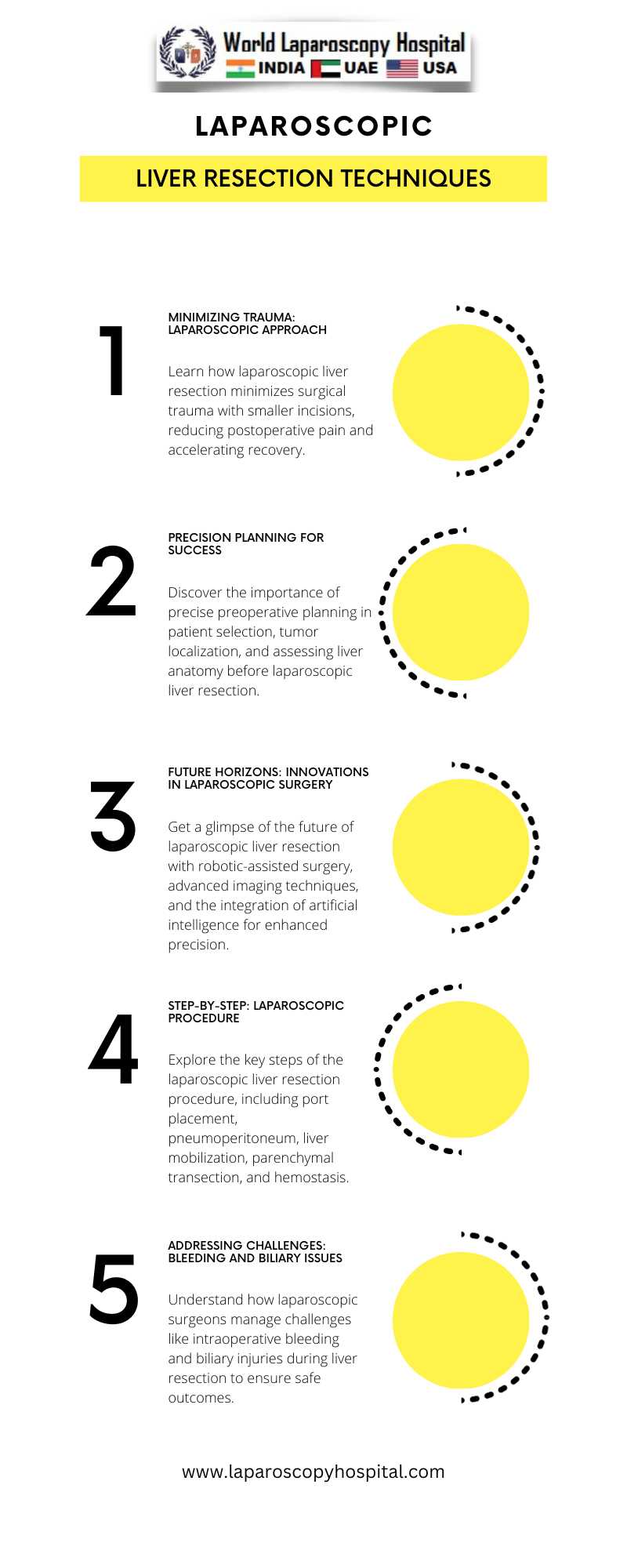Introduction
The field of surgery has witnessed significant advancements over the years, with a growing emphasis on minimally invasive techniques to reduce patient trauma and improve outcomes. Laparoscopic liver resection, a subset of minimally invasive surgery, has gained prominence as an effective approach for treating various liver conditions. In this article, we delve into the world of laparoscopic liver resection techniques, exploring its evolution, benefits, challenges, and future prospects.

I. Evolution of Laparoscopic Liver Resection
Laparoscopic liver resection, also known as laparoscopic hepatectomy, has evolved considerably since its inception. This section provides an overview of its historical development and key milestones:
1. Pioneering Moments: The first laparoscopic liver resection was performed in the early 1990s, marking a significant breakthrough in minimally invasive surgery.
2. From Simple to Complex: Initially, laparoscopic liver resections were limited to simple procedures, such as wedge resections. However, as surgeons gained expertise, more complex resections, including anatomical resections, became feasible.
3. Technological Advancements: Advances in surgical instruments, including the development of specialized laparoscopic equipment, have played a pivotal role in expanding the scope of laparoscopic liver resection.
II. Benefits of Laparoscopic Liver Resection
Laparoscopic liver resection offers several advantages over traditional open surgery, making it an attractive option for both patients and surgeons:
1. Minimal Trauma: Smaller incisions result in reduced postoperative pain and a quicker recovery period.
2. Shorter Hospital Stays: Patients often spend less time in the hospital, leading to lower healthcare costs.
3. Improved Cosmesis: Laparoscopic surgery leaves smaller scars, enhancing the patient's aesthetic outcome.
4. Comparable Outcomes: Studies have shown that laparoscopic liver resection can achieve outcomes similar to open surgery while minimizing complications.
III. Laparoscopic Liver Resection Techniques
A. Preoperative Planning
Successful laparoscopic liver resection begins with thorough preoperative planning. This section discusses the essential aspects of planning:
1. Patient Selection: Criteria for patient selection, including tumor size, location, and underlying liver disease, are crucial considerations.
2. Imaging Modalities: The use of advanced imaging techniques, such as CT and MRI, aids in precise tumor localization and assessment of liver anatomy.
B. Surgical Approach
1. Port Placement: Proper placement of laparoscopic ports is critical for optimal access and visualization of the liver.
2. Pneumoperitoneum: Creation of a pneumoperitoneum using carbon dioxide gas is essential to create a working space within the abdomen.
3. Liver Mobilization: Techniques for liver mobilization and exposure are discussed, including the use of liver retraction devices.
C. Parenchymal Transection
1. Instruments and Energy Sources: Various instruments and energy sources are employed for liver transection, including harmonic scalpel, LigaSure, and CUSA.
2. Techniques: Different techniques for parenchymal transection, such as the clamp-crushing method and stapler application, are explored.
D. Hemostasis
1. Hemostatic Techniques: Achieving effective hemostasis during laparoscopic liver resection is crucial to prevent bleeding complications.
2. Pringle Maneuver: The use of the Pringle maneuver and its variations are discussed in the context of laparoscopic surgery.
IV. Challenges and Complications
Despite its advantages, laparoscopic liver resection presents unique challenges and potential complications. This section addresses these issues:
1. Bleeding: Strategies for managing intraoperative bleeding are discussed, including the use of hemostatic agents and vessel sealing devices.
2. Biliary Injuries: The risk of biliary injuries and methods to mitigate them are explored.
3. Learning Curve: Surgeon experience and the learning curve associated with laparoscopic liver resection are important considerations.
V. Future Directions and Innovations
The field of laparoscopic liver resection continues to evolve, driven by technological advancements and innovative techniques. This section provides insights into the future of this surgical approach:
1. Robotic-Assisted Surgery: The role of robotic-assisted laparoscopic liver resection and its potential benefits are discussed.
2. Enhanced Imaging: Advances in intraoperative imaging, such as indocyanine green (ICG) fluorescence, are enhancing surgical precision.
3. Artificial Intelligence: The integration of artificial intelligence and machine learning in surgical planning and guidance holds promise for further improving outcomes.
Conclusion:
Laparoscopic liver resection has emerged as a valuable approach in the field of hepatobiliary surgery. Its evolution, numerous benefits, and ongoing innovations make it a compelling option for patients and surgeons alike. While challenges remain, ongoing research and technological advancements are likely to further enhance the safety and efficacy of this minimally invasive technique, ultimately benefiting patients in need of liver surgery. In a medical landscape constantly evolving, laparoscopic liver resection stands as a testament to the power of innovation and collaboration in improving patient care and surgical outcomes.